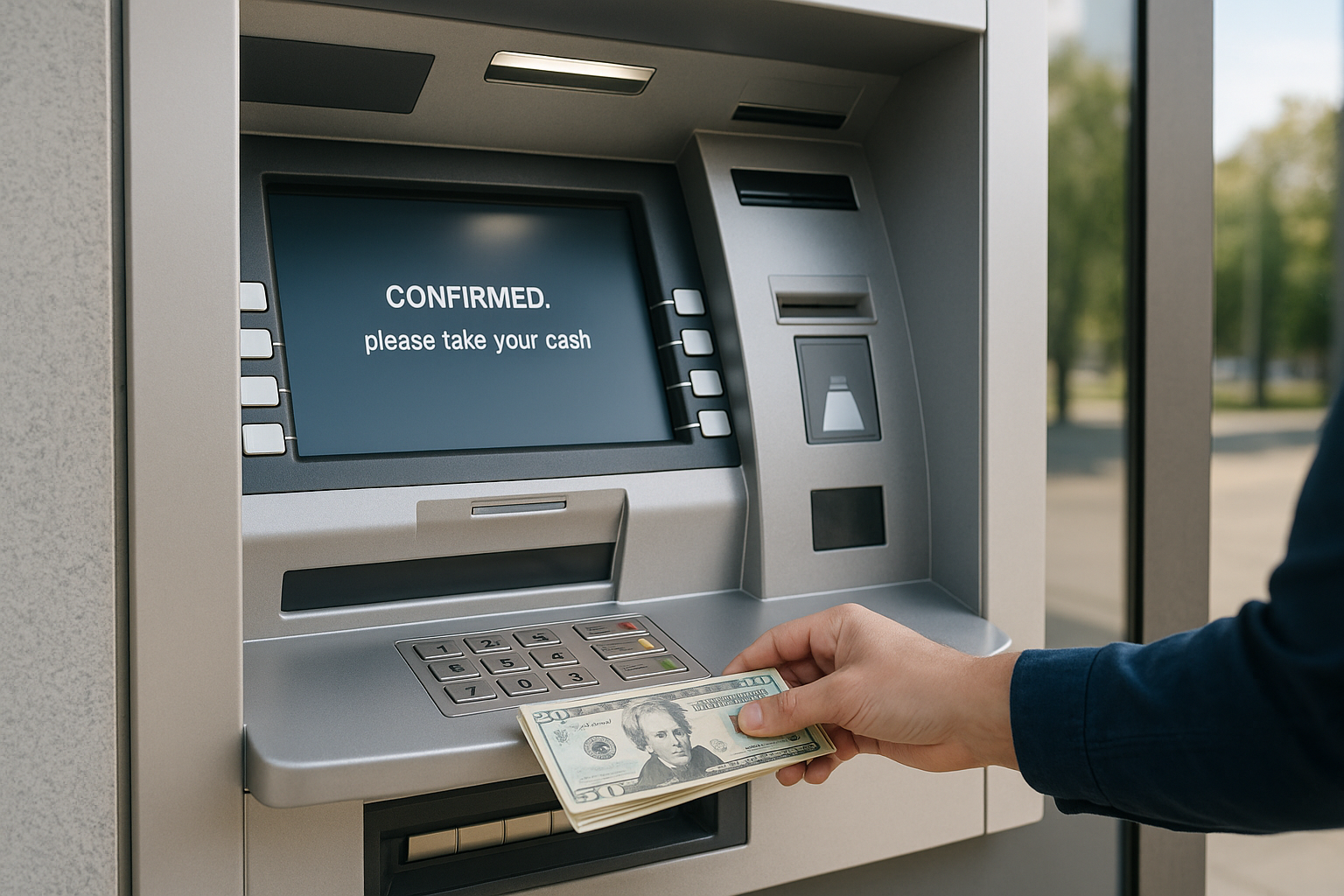ATM fees are small but add up quickly. Between your bank’s out-of-network charge and a local surcharge, you could easily lose $5 or more per transaction. Fortunately, there are reliable ways to withdraw cash without paying ATM fees—whether you’re home, traveling, or using a digital bank.
Why Do ATM Fees Exist?
Each ATM owner—whether it’s a bank, credit union, or retail store—charges fees to cover maintenance, cash replenishment, and network costs. You’re often hit twice: once by your bank for being “out of network,” and again by the ATM operator for using their machine. Knowing this helps you find ways to completely avoid both layers of cost.
1. Stick to In-Network or Partner ATMs
The easiest way to avoid fees is to use ATMs inside your bank’s network. These machines waive withdrawal charges for account holders. Many banks also join surcharge-free networks, meaning you can use other banks’ ATMs at no cost. For example, Allpoint’s nationwide fee-free network partners with major digital banks and retailers.
Community banks and credit unions often use MoneyPass ATMs used by regional banks and financial cooperatives, giving members free access across thousands of shared locations.
2. Use Your Bank’s Mobile App To Find Free ATMs
Almost every major bank app includes a map of fee-free ATMs. This ensures you never guess or accidentally pay a surcharge. Many fintech apps like Chime, Ally, and Capital One 360 also include built-in ATM locators that show which machines are free and which accept deposits.
If you’d rather browse on desktop, try our ATM Finder for the nearest fee-free machines with filters for cardless and 24-hour access.
3. Get Cash Back at Stores Instead of Using an ATM
Many grocery and retail stores let you request cash back when you make a debit purchase. There’s no ATM involved, so you skip the fee entirely. Common options include Walmart, Kroger, CVS, and Walgreens—just select “Debit” and “Cash Back” at checkout.
4. Plan Fewer, Larger Withdrawals
If you can’t find a free ATM nearby, minimize your cost by withdrawing larger amounts less often. Paying a $3 fee once a week is far better than paying it three times in smaller transactions. Combine this with mobile alerts to track your balance and stay within daily limits.
5. Travel Smart With Fee-Free Networks
When traveling, ATM fees can be even higher, especially internationally. Always check whether your bank partners with a surcharge-free network that operates where you’re headed. Our guide on how to avoid ATM fees while traveling lists networks that work across state and country lines.
6. Consider Banks That Reimburse Fees
Some online and credit-union accounts refund ATM fees at the end of each month. While it doesn’t stop the charge at the machine, it still makes every withdrawal effectively free. Popular examples include Charles Schwab, Axos Bank, and Alliant Credit Union.
7. Double-Check for Fee Warnings Before You Confirm
Every ATM must display a message before charging a surcharge. If a fee notice appears, press “Cancel” to back out. You won’t be charged unless you confirm. Taking a few seconds to read the screen can save you a few dollars every time.
Quick Recap: Smart Habits To Save on ATM Fees
- Use in-network or partner ATMs through free networks like Allpoint and MoneyPass.
- Check your bank’s app or an independent ATM locator before withdrawing.
- Opt for store cash back when possible.
- Withdraw less frequently in larger amounts.
- Choose banks that reimburse ATM fees automatically.
Final Thoughts
ATM fees aren’t inevitable. With a little planning and the right tools, you can withdraw cash anywhere without losing money to surcharges. Stick with verified networks, use locator apps, and make smart withdrawal choices to keep every dollar where it belongs—in your wallet.
For more insights, the FDIC’s official guide to ATM fees and NerdWallet’s national ATM fee comparison both provide reliable background data on average costs.
